09 PFT
Dyspnea
_..
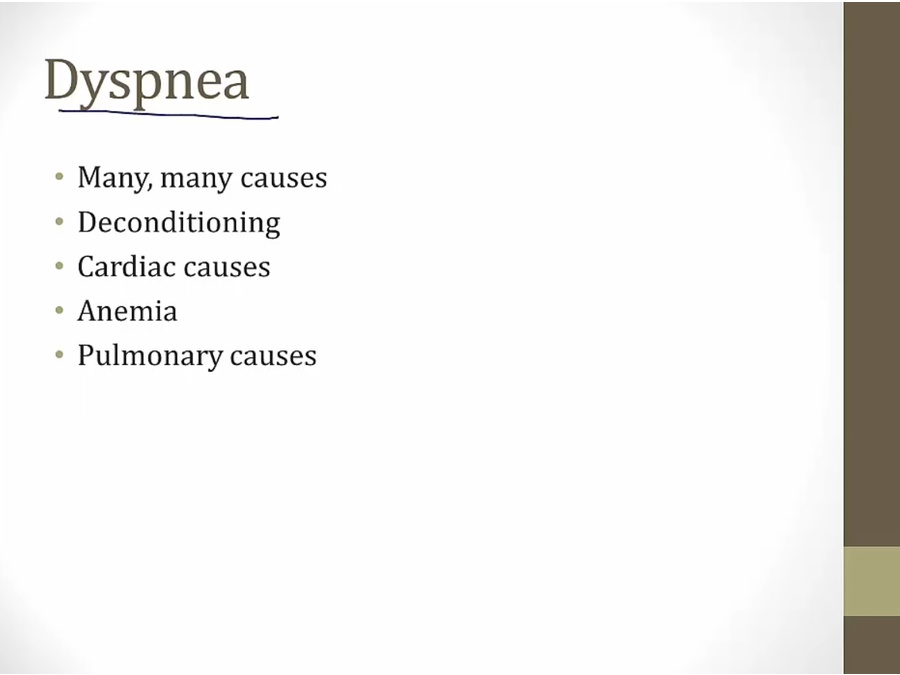
PFT in context
in real life: deconditioning common cause, out of shape
cardiac: HF, coronary diseases
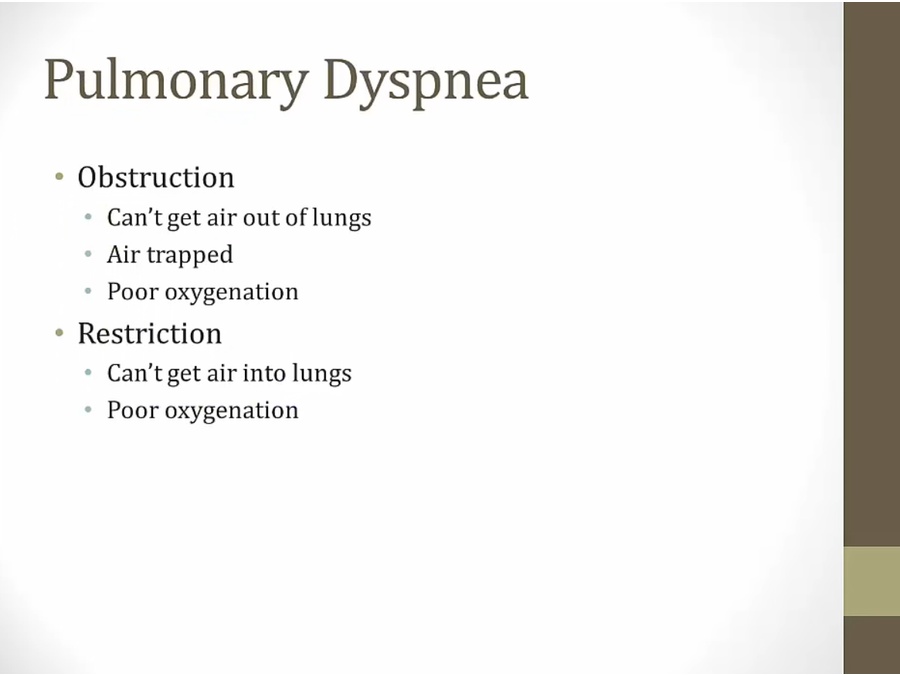

obstruction: more at neck, air can't get out
restriction: can't expand
PFT
_..
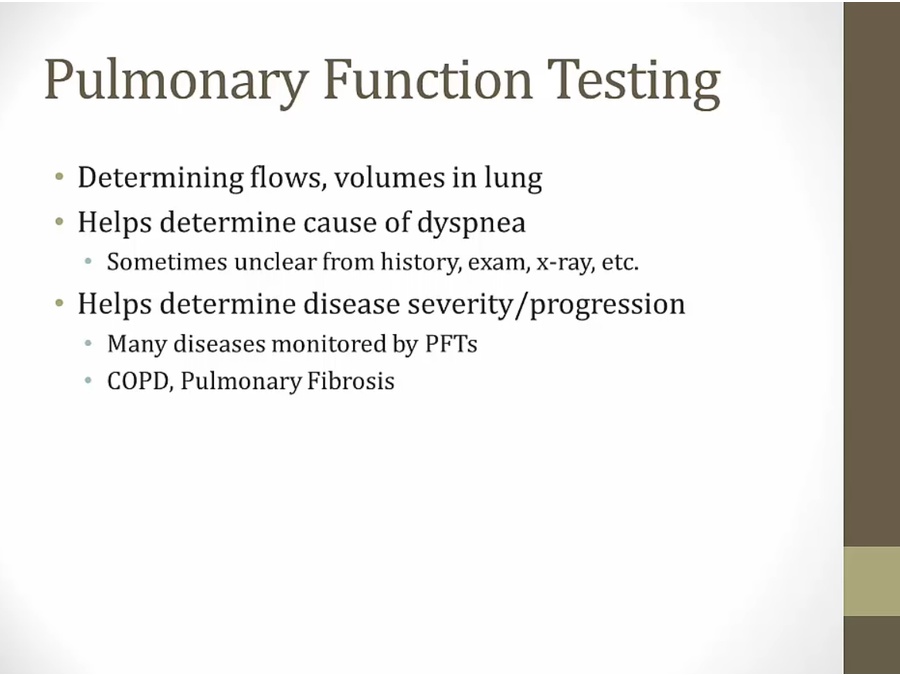
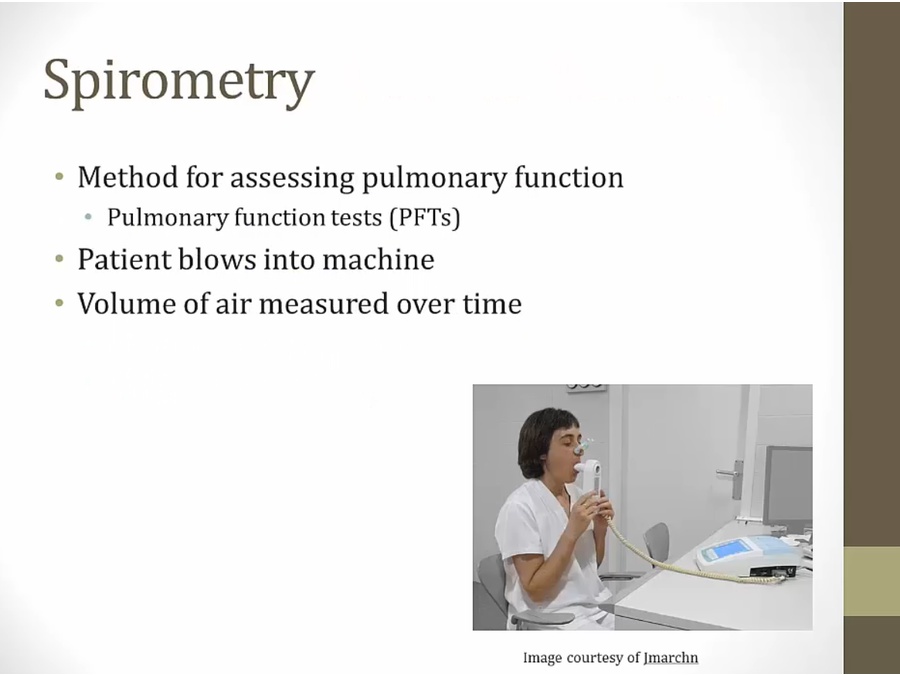
_..

most air blown out in 1st second
FEV1: forced expiratory volume in 1 second
FVC: forced vital capacity, total

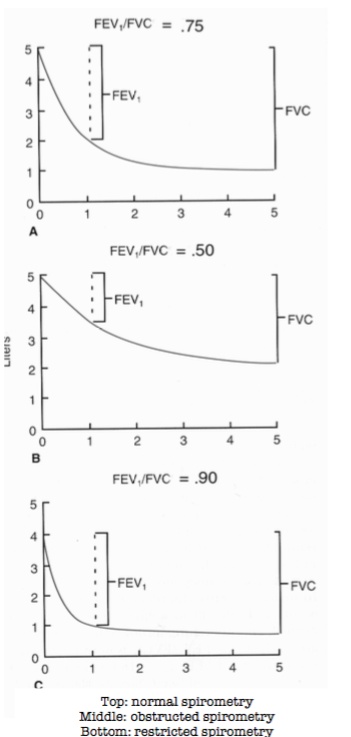
restrictive: normal slope and shape. No problem with mechanics of getting air out. Can't draw enough air in. FVC lower
obstructive: slope slower. Shape different
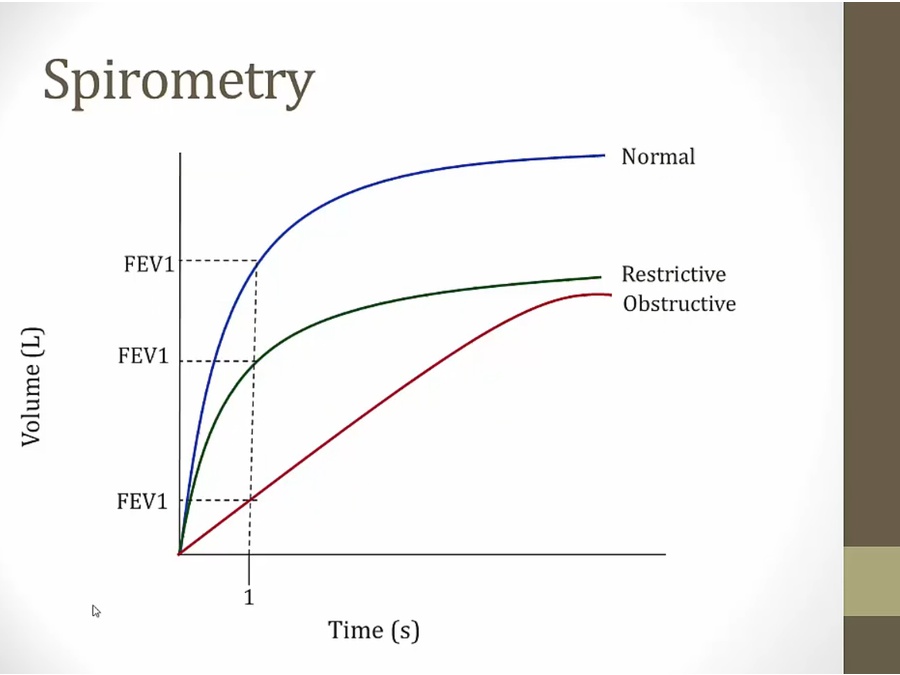
restrictive: lower FEV1. Can't draw as much air in in first place, so can't exhale as much out
obstructive: very low. Obstruction to outflow. Can't get out
Both has lower FEV1, decrease in obstructive much lower

falls in both
restrictive: can't draw as much in
obstructive: can't get out

restrictive: normal or may even rise
_..

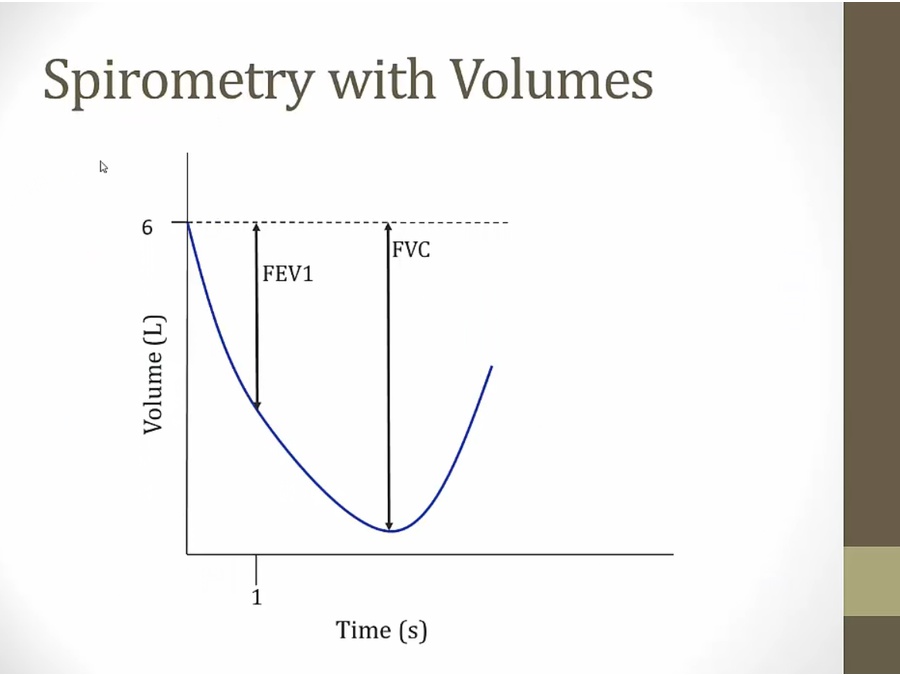
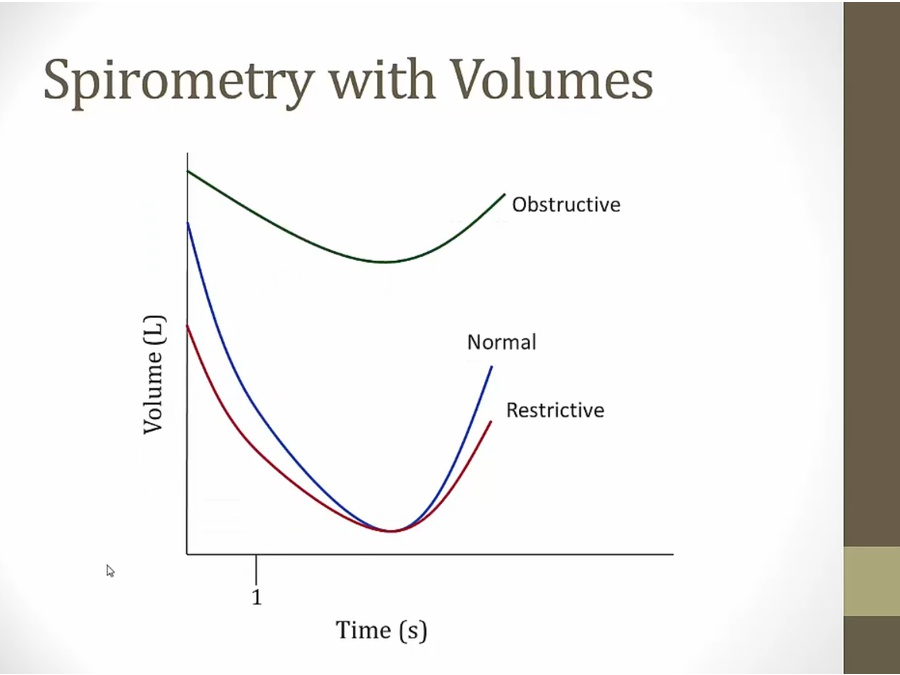
Obstructive: volume higher because air trapping, starts at higher point at 0
Restrictive: can't get air in. Starts at lower point
_..

_..
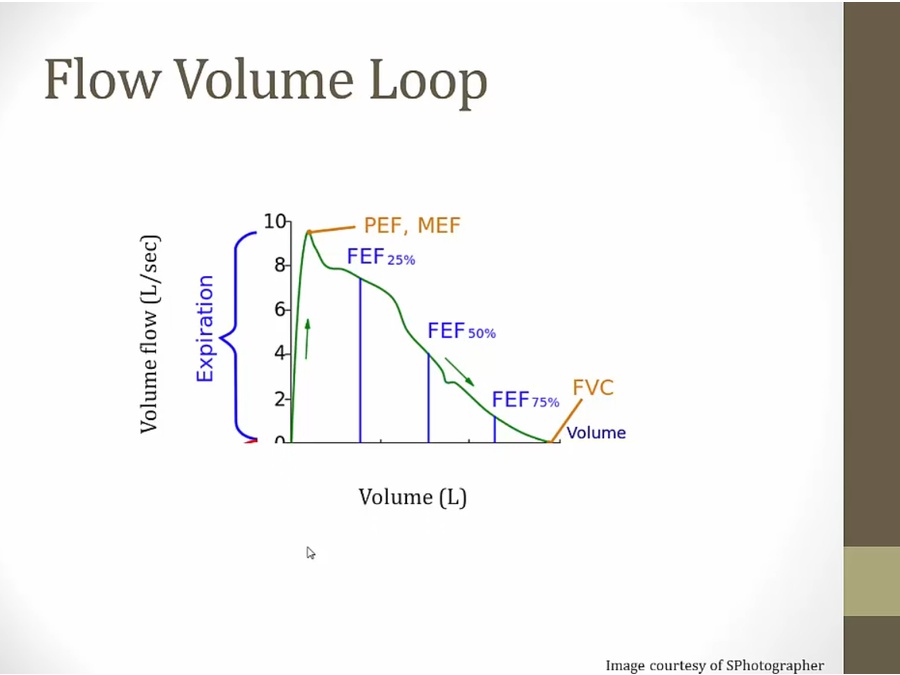
PEF: peak expiratory flow, fall in obstructive lung disease
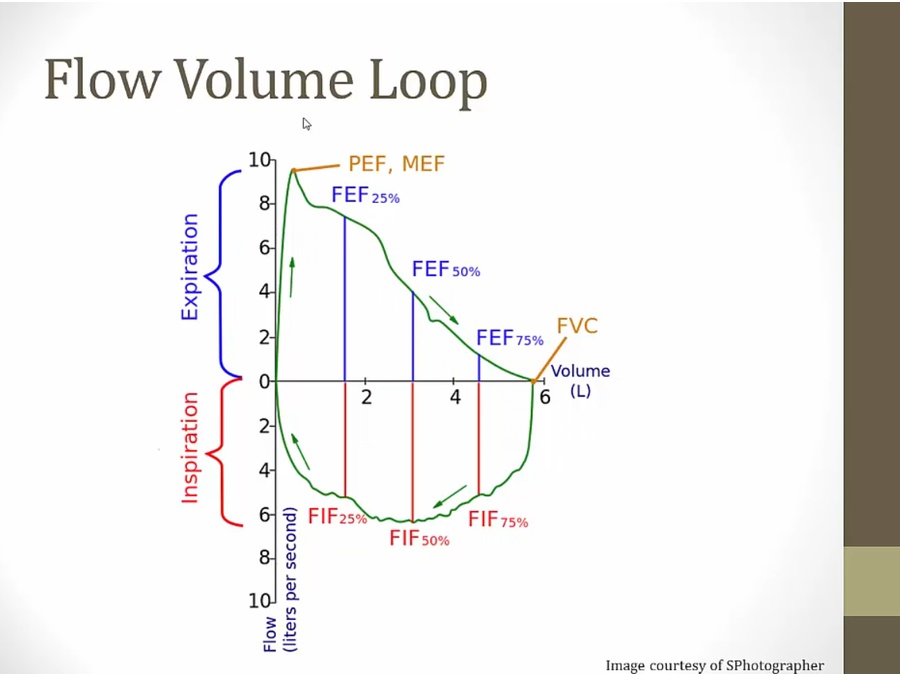
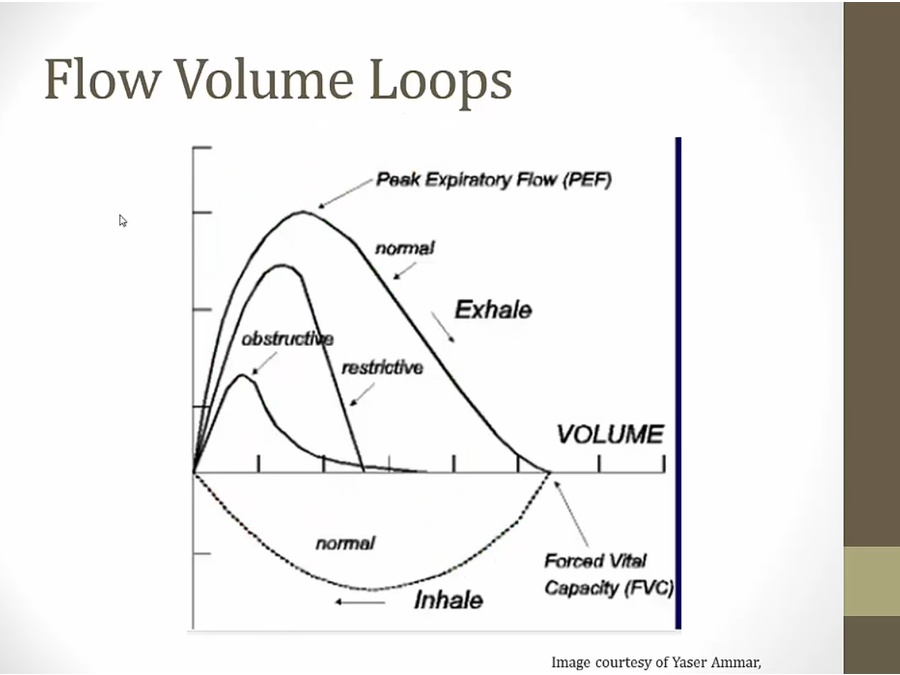
Obstructive: PEF much lower, gentle gradual down slope instead of rapid (obstruction, changes shape)
Restrictive: looks like normal curve just smaller
Work of breathing
_..
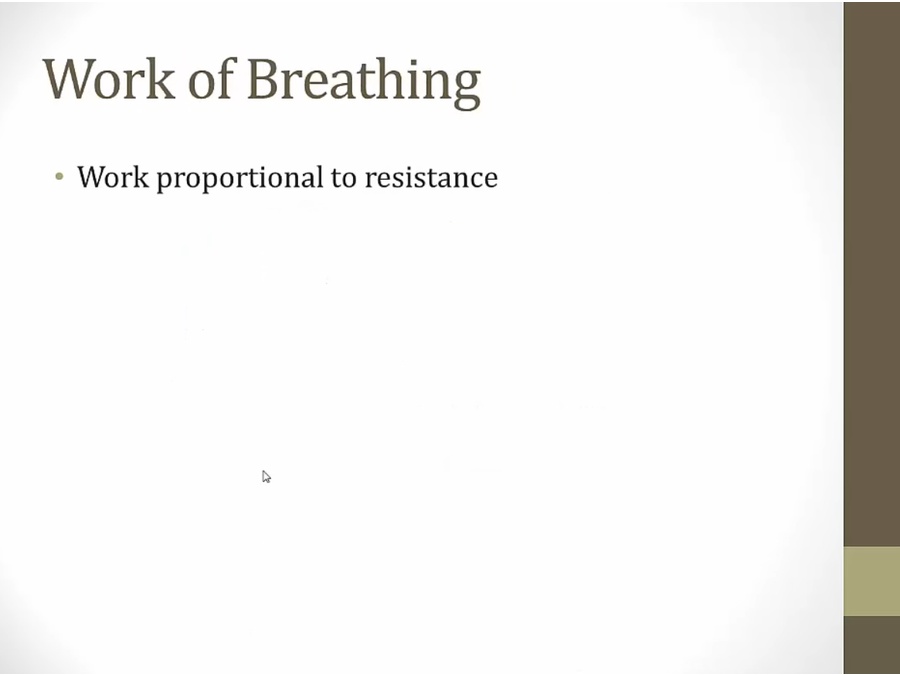
amount of energy body expends to move air

bronchoconstriction: moves curve up
bronco dilator: curve moves down
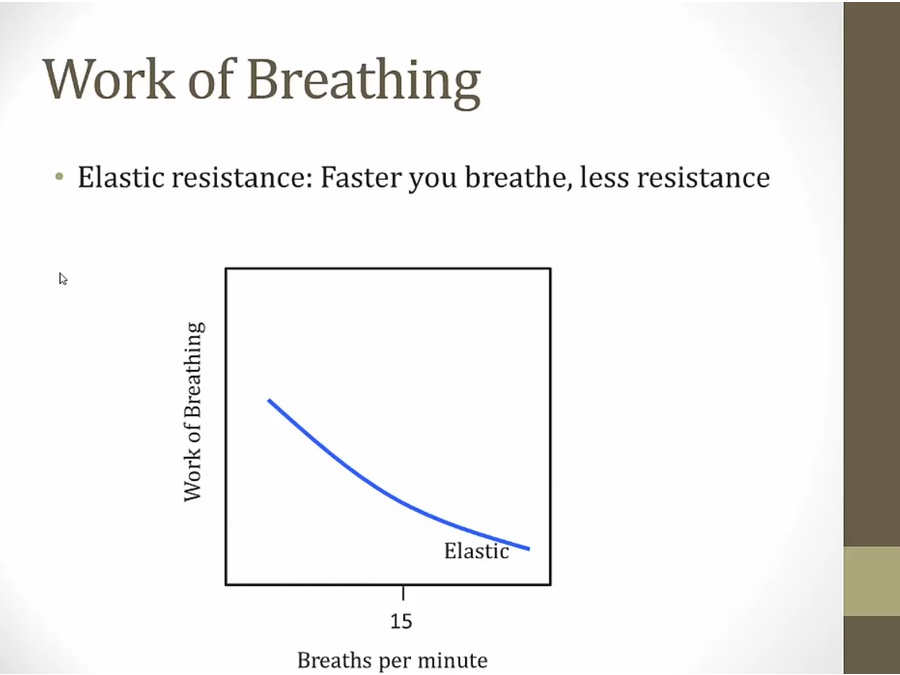

more work to inflate a completed deflated lung than to inflate partially deflated lung
top: very low respiratory rate, alveoli completely deflate/inflate with each breath
bottom: high respiratory rate, alveoli start with some air, not as much work to inflate


restrictive: at all rate, more work required, same shape = same respiratory rate as normal. Working harder to breath overall, but rate unchaged
obstructive: different shape, min point shifted to left. Increased resistance to airflow, breath at lower, long breaths to avoid turbulent flow
Last updated
Was this helpful?